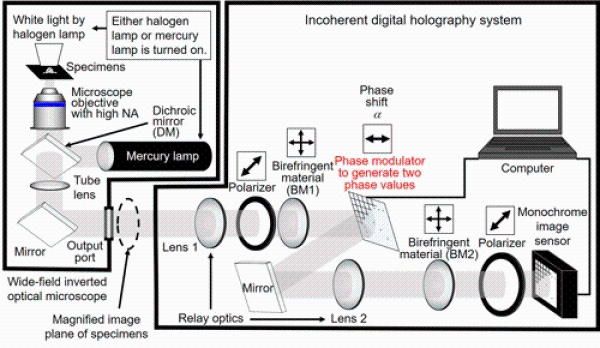Development of High-speed Holographic Fluorescence Microscopy System with Submicron Resolution
– The group has realized a scanless 3D imaging system and an algorithm for high-speed measurement –
January 29, 2021
National Institute of Information and Communications Technology
Tohoku University
Toin University of Yokohama
Japan Science and Technology Agency
Abstract
Achievements


Future prospects
- High-speed holographic motion-picture imaging for 3D dynamics and multiple moving objects in a 3D space.
- Improvements of the system such as recording of a quantitative phase, sensing of ultimately weak light, and construction of a compact optical setup.
Information of the article
Appendix
Digital holography

Computational coherent superposition (CCS)

Technical Contact
TAHARA Tatsuki
Electromagnetic Applications Laboratory
Applied Electromagnetic Research Institute
NICT
E-mail:

















Media Contact
HIROTA Sachiko
Press Office, Public Relations Department
NICT
E-mail:




















Press Office, IMRAM
Tohoku University
E-mail:




























Research Promotion Department
Toin University of Yokohama
E-mail:



















SHIMABAYASHI Yuko
Department of Strategic Basic Research, JST
E-mail:

















